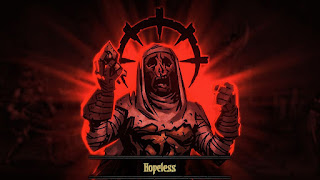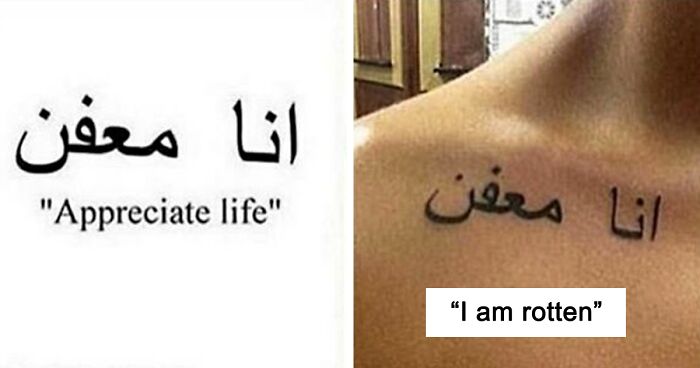Titanium Avalanche
Readings for my Creetures
Thursday, March 16, 2023
Red Highlanders; accidentally recreating Alpha/Beta/Omega culture
Cultures From Below
A page to help familiarize you all with the "known" cultures, creatures, and travelers of the Veins. None of these should be considered complete information, but it will give you what most of the tribes know of each particular thing. Of course, it is assumed these are biased entries.
To be updated over time as you encounter more.
Ælf Adal: Hauntingly beautiful. Cruel. Utterly inhuman. They are born of the Nightmare mirror beneath the surface. They are urbane and fond of insane sorceries. It is said by some that every human cruelty was taught and made by an Ælf Adal. They hate us. They hate to an unfathomable degree; never forget this. They appear as beautiful humans devoid of any color. Skin of impenetrable pitch. Hair of glowing white. They seek to usurp the waking world and plunge the world into Nightmare; all are certain they will succeed.
Dvargir: All dwarves are to some extent, mindless. Focused on few things besides their endless toil. Though some of their thoughts are somewhat human, the range of expression is horrifically small. The Dvargir are even more so. They face only the future; one in which only they and their Work exists. A Dvargir will only make a deal with you if they are statistically-No, mathematically certain that it will forward the Work. It may not be in your lifetime, nor theirs, but it will happen. They are exclusively literal in meaning. There can be no bargain; only cause and effect. They are not cruel, only apathetic to others. None take more slaves than the Dvargir; it is Natural. The Ælf Adal hate them as well; the Dvargir find the Ælf Adal an inconvenience.
Knotsmen: Cursed. Cursed. Cursed. Do not associate with a Knotsman. Never accept any trade with a Knotsman. It would be better if they were all swallowed by Mother Mountain. They will always Lie. It is a waste of life to speak to them; no words of humanity shall ever reach their twisted hearts. They were Greedy, long ago. Made a tainted Sacrifice. Sacrificed their children, their children's children. They deny its cost though they know of it. They cannot bear to face their ignorance.
The Olm: Not human, and yet perhaps more human than anything else Below. They are blind. Skin slippery and soft like a frog. They make little noise and rarely are seen in any daylight. Swim down through caves long enough and they shall find you. The Tribes have often traded with them; well made wood is a precious tool for them. If you are beloved by them, then they shall eat your body upon your death; they understand Hunger and Sacrifice.
Milk-Skin-Traders: They live on the Nightmare Sea, in their pleasure barges. Entirely human. Somehow, the only people of the Nightmare Sea the tribes have ever seen are these repugnant, fat, traders. They do not truly understand Sacrifice. They merely understand how to calculate its "worth". You will know them by their pain scales. They use slaves, but it is no special thing; most prefer the use of white pack apes.
Calcinated Cancer Bear: Beautiful creatures of an age before the world Burned. They crept beneath the soil to escape and were permanently changed. They seek out flame to sooth their aching growths. All live in pain; all are still dangerous. The Frostbitten Bastard tribe is known to test their heroes by sending them into indefinite exile until they return with the pelt of such a creature. There is some nobility in ending its continuous suffering.
The Rapture: From the moment you stepped into the Underworld, it began to hunt you. It will find you at your most desperate. Alone. Starved. Lost. You have seen it before, even if you did not know. Lurking in the flickering shadows of a dying fire. In the cold abyss of the cave where you were forced to leave behind your family. In the nervous sweat of your brow when the cave wall slips out from beneath your groping foot. It cannot bleed. It has no flesh to slay. It invades the mind and takes your flesh as its own. You will be forced to kill and die by your own hand.
All who go Below must face it eventually. You make invoke its Name and call it to you, if you are certain you can ward it off. But you must face it.
Wednesday, March 15, 2023
Tribes of the Hungry Mountain
- All tribes have heroes, warriors, and shamans.
- Most tribes do not have a god that they follow; their particular culture is based on the knowledge and rituals of their shamans.
- A tribe does not survive without its shamans.
- Exile is the most extreme form of punishment, beyond death. Only a shaman may Exile you, and you are Doomed.
- All are, to some extent, nomadic. The Mountain shifts and changes.
- Concepts such as institutions, formalized laws, and other concrete abstractions of the city are difficult to comprehend.
- All have felt starvation and thirst at least once.
- All have lost loved ones and tribemates.
- Perpetual growth and gain is considered unlucky. It is best to change; all gain requires sacrifice. If not given, something else will be taken eventually.
- They have no trouble understanding malice and desperation.
- Conservation of food, light, warmth, and stories is extremely important. All of these have been sacrificed for.
- Never share something you have sacrificed for with someone who does not understand the gravity of that sacrifice.
- Sacrifice is virtue. Ignorance of this is complete immorality.
- Truth, derived from Sacrifice, is sacred.
- All have taken a life. All have fed and drank from this sacrifice.
- Your tribe: born into or made, is the most important unit of social life.
- Bonding is done so by understanding the loss and sacrifice of another; anything sacrificed for, freely given, is a most precious and personal gift.
- Every tribe has its own unique art form. It is somewhat derived from the rituals of the shamans, but everyone in the tribe knows this art form.
- All players of these tribes start with a skill level 5 for climbing, pole falling, and vaulting
- They are of one of the few humans who can eat human flesh for sustenance. Proper sacrifice and ritual must be observed; if so they do not become ghouls. Exiles and those who eat without Empathy are subject to the sickness; forever cursed to hunger they are.
Friday, June 10, 2022
It says "great warrior" in chinese
Language point system for the hexcrawl because I want to make everything more difficult. I hate my players, and I want them to suffer:
- Languages are learned like skills. Interactions and uses allow the PC to attempt to improve their language rolls up to 10, at which point they will be considered fluent in most languages.
- A language roll may be attempted to understand another language with greater accuracy than what your skill already provides, but a failure can still provide information if your language level is high enough.
- If the language is directly or semi related to a language you know well (basically 10), you will have the new language at a skill of int/2 to begin with.
- Different language levels provide different levels of understanding:
- 10: Fluency + understanding of related languages
- 7: Understanding of spoken word, difficulty clarifying writing and reading
- 4: 2 or more interpretations of spoken word, only understanding certain words of reading and writing
- 1: Completely illiterate, you only understand a handful of words. Maybe.
- If your native language has no writing system, your ability to understand reading and writing is "one tier down".
Saturday, May 28, 2022
1000 ways to be crippled by life
Exhaustion: -4 to all rolls until sleep. Every extra point of exhaustion cumulatively decreases con by 1. Every night of normal sleep restores 1 con.
Dehydration: -4 to all rolls until drinking. After 2 day of not drinking, roll con saves every day against death.
Starvation: After [con] days of not eating, -4 to all rolls until your first substantial meal. After [con]x2 days of not eating, 10 minute rests no longer provide healing. After [con]x3 days of not eating, physical stats drop to 1. After [con]x4 days of not eating, con save every day against death.
Blindness and partial blindness are usually caused by darkness, but can also be caused by excess light. Some examples of partial blindness conditions:
- You observe the region just beyond your 30 feet of torchlight
- Your only source of light is a candle
- Moonlit nights
- Large amounts of shadows
- Snowblinding
- Looking directly into water on a bright day
- Heavy weather
Partial Blindness: You can see general shapes but only very low levels of detail. Attacking things is hard (-2) and you can’t really make out what you’re even looking at. Time is less of an issue though, detail can still be mostly seen if up very close.
Blindness: Can’t see shit. You get basically no descriptions of a room you crawl through besides the dimensions, sounds, smells, and large objects. 10 minutes of searching gives you the same information you would have initially gotten with vision. Another 10 minutes would be required to learn anything more. Everything takes more time. (-4 to hit if you can sense the creature without sight, almost impossible to attack without information).
Paralysis: Every attack against you hits and crits. Voluntary movement impossible.
Drunk: Increases crit fumble range by 1 for every drink.
Cannibalism: Every time you partake in cannibalism, roll a con save. Once you fail, your body will begin the process of ghoulification. Normal food turns to ash in your mouth; only meat sates the hunger, and only human meat sates it for any significant length of time.
- Every day without human meat requires a cha save to prevent pursuing the consumption of human meat. Every day without consuming human meat adds a -1 penalty to the save.
- Completing the process of ghoulification requires a steady diet of humans over about a month.
- Exact conditions have not been decided but would be: increased strength, eventual undeath, paralytic claws, ravenous hunger, darkvision, ability to climb walls and ceilings
Awakening: Stay awake for 3-4 weeks and you will Awaken. The PC becomes an NPC unless the player (and the group) consents to acting out explicitly and completely psychotic behaviors.
Monday, March 14, 2022
Rule Hub
Friday, March 11, 2022
Barbarian Home Depot
Before the PCs set out for their field trip, they will be allowed to stock up on any amount of the supplies listed below before they set out. Once they do set out, they will need to find more supplies and resources the traditional way.
Inventory: str+(bag you carry)
Refresher on weapons:
- 1d6 damage
- 1d8 if you two handed and str is 7+
- Two handed weapons take up 2 inventory slots
- Even if a weapon does not explicitly state a function in its description below, you can probably think of a unique use. For example while there are no inherent mechanics for crushing vs bleeding wounds, I am sure that the type of weapon you choose will make crippling or hemorrhaging easier. Modifying your weapons and options may also produce differences
- Hirelings taken from your tribe will have 14 inventory slots if given a backpack
Weapons:
- Stone spear: 25/35/40, versatile
- Stone dagger: better for tight spaces
- Boomerang: 40/55/65, returns if you miss, curved flightpath
- Sharp rock or sharp rock tied to a handle: as handaxe
- Bow and arrow: 150/210/240, two handed
- War club/root club, wooden or bone (mammoth): may be one or two handed depending on size
- Rock sling: 80/110/130, rocks are almost anywhere
- Spear sling: 50/70/80, damage as two handed
- Macuahuitl: two handed
- Dart blower w/ darts: 25/35/40, no damage: depends on poison
- Femur bone stabbers: easy to make, also can be used as stakes
- Remorhaz jawbone kukris: can also be used as flesh hooks
- Ivory harpoon: 30/40/50, barbed, can be tied to a rope
- Net: 5/-/10, can be used to catch things
Tools and Resources:
- Stone mallet
- hammering things
- 1 slot
- Stone axe
- chopping and carving
- 1 slot
- Chisel
- useful with a mallet for carving
- 1 slot
- Flint rock
- neolithic striker
- 1 slot
- Leather backpack/sacks
- backpack +7
- sacks +4
- no slots
- Rope/twine/string
- 30 feet of rope = 1 slot
- "infinite" ball of twine/string = 1 slot
- Attachable bone hook
- can be used with poles, rope, and for any number of applications
- no slots
- Poles
- of the 10 foot variety and more
- 1 slot
- Torches
- 2 torches = 1 slot
- Waterskins
- can carry three "drinks"/doses
- 1 slot
- Grease/lard/oil
- Fermented or normal milk/Cheese or butter
- Rations
- 1 ration = 1 day of eating = 1 slot
- Mostly dry aged meats
- Blankets/furs/basic animal skins
- 1 good blanket/skin = 1 slot
- Absorbent rags
- 1 slot
- If wrapped around a stick and hung above boiling water, can be used to collect distilled drinking water
- Bag of smoothed/jagged rocks
- pebble sized, time consuming to make but can function similar to ball bearings or caltrops
- 1 slot
- Bag of spiders
- 1 slot
- Cave/ritual paint
- 1 slot for a handheld jar
- Wooden or bone stakes
- 3 stakes = 1 slot
- Pipes
- 1 slot
- Clay pots
- Containers and mixing materials
- slot depends on size
- 6 inch diameter = 1 slot
- 1 foot diameter = 3 slots
- 2 foot diameter = 7 slots
- can also be used to contain other slot filling items but cannot be carried in backpack this way; only in carts/vehicles
- Boat
- canoes
- small rowboats: 5 people each
- smaller sized longship: 20-30 people
- Goats
- fermented goat milk (alcohol), normal milk
- pure souls for sacrifice
- Pine resin/sap
- Great for sticking things together, or fire starting material
- 1 slot for a bundle
- Black smoke leaves
- When burned produces a thick black smoke that results in partial blindness up to 5 feet away and complete blindness any farther
- 1 slot of leaves can fill a 30x30 room for 10 minutes
- Woodland ghillie suit
- Blending in forested environments
- 2 slots in a bag
- Basic animal pheromone glands, dung, or blood
- Giant or normal sized feathers
- Commonly found giant feathers go up to 10 feet in length
- Shedded exo-plates of a Remorhaz
- Not mirrors, but highly reflective and durable. Interlocking plates provide temperature insulation
- 1 slot for a 1 foot x 1 foot plate, but they come in many sizes
- Therapeutic Compounds:
- 1 slot = 1 bag. For non animal compounds, 3 doses are in each bag. 1 dose for normal effect, 3 doses for extreme effect.
- Mother's Milk: Found in the bulbs of the flowers brought up by the lowlanders. Induces an extraordinary dreamlike bliss that pulls the smoker into a sleep just precipitating the border of death. Can be diluted in the caverns of the mountain to produce Mother's Kiss, a liquor that sends the mind into the Waking Dream.
- Opium. Painkiller, causes extremely deep sleep for 1~6 hours.
- Higher doses slow down the nervous system. Con save to not stop breathing.
- In diluted liquor form, your mind enters psychotropia for 1~6 hours while you are still awake. Actions and sights may layer over each other. Also acts as an alcohol.
- Fever Fire: The berries of a nearly translucent plant that can only grow up in the glaciers, where the cold carves flesh like a knife. For a few minutes, the body seizes and burns. Frostbite and rot can be driven back, but it leaves the eater shaken and exhausted.
- Drives the body into a powerful fever. Can save you against frostbite and jump starts the immune system. Con save at the end against exhaustion. 2~12 minutes.
- Higher doses overheat the body and over-activate the immune system. Con save against brain damage and con save against cytokine storming.
- Shaman Barb: A thorny vine bush found across the Broken Coast. Pricking the skin with Barb calms the nerves and tends to improve amiability. High doses paralyze the body and have been seen to drive some into madness, particularly shamans and their kin.
- Not a combat drug; would probably reduce initiative and combat rolls. Kind of acts like pot; can be used to reduce stress and improve morale, and is enjoyed during negotiations. 1~6 hours.
- Higher doses can act as a neurotoxin. Con save against full body paralysis. At ridiculous doses, wis/cha save against schizophrenia. If predisposed, schizophrenia is possible at high dose levels and offers no save at ridiculous doses.
- Salja: Made from the grounded hairy roots of tundra grass the grow near the Cloud Maker. The paste is grey and bitter. But, for a few minutes after eating, other things become addictive. The taste of other foods is easiest, then base sensations, and even behaviors.
- If unwilling, make a wis/cha save against developing addictions. High doses have basically no effect, but chronic and coordinated doses can strengthen the addiction.
- Tongue-Globber Toad in a Bag: Those who lick the toad will experience frightful swelling and great bouts of energy and strength. Unfortunately, they will also be rendered dumb and become completely unintelligible as their tongue swells up in the mouth.
- Your body swells with extra blood and your sympathetic nervous system roars into motion. Your tongue swells up, and so does your brain. +4 to physical rolls, -4 to mental rolls. You become incredibly drawn to bright colors and amphibians. 30 min~1 hour.
- Higher doses can be dangerous. Con save against hematoma. Con save against heart attack. Con save against shock.
- Blood Belly Viper in a Bag: A single bite is all it takes. The fangs are small and the teeth barely nick the skin, but it is enough. You will notice after a day or two; the wound does not heal. The blood trickles slowly over the days, then over weeks. Only the strongest survive the harrowing month, and are left crawling with skin tight hands at the maw of Mother Mountain.
- Long lasting anticoagulant. Con save against effects. Wounds will not heal normally and blood will not stop flowing out. Your blood smells noxiously and obscenely sweet to everything within a mile. Lasts 1 month.
- Higher doses will probably cause necrosis and breakdown of organs.























